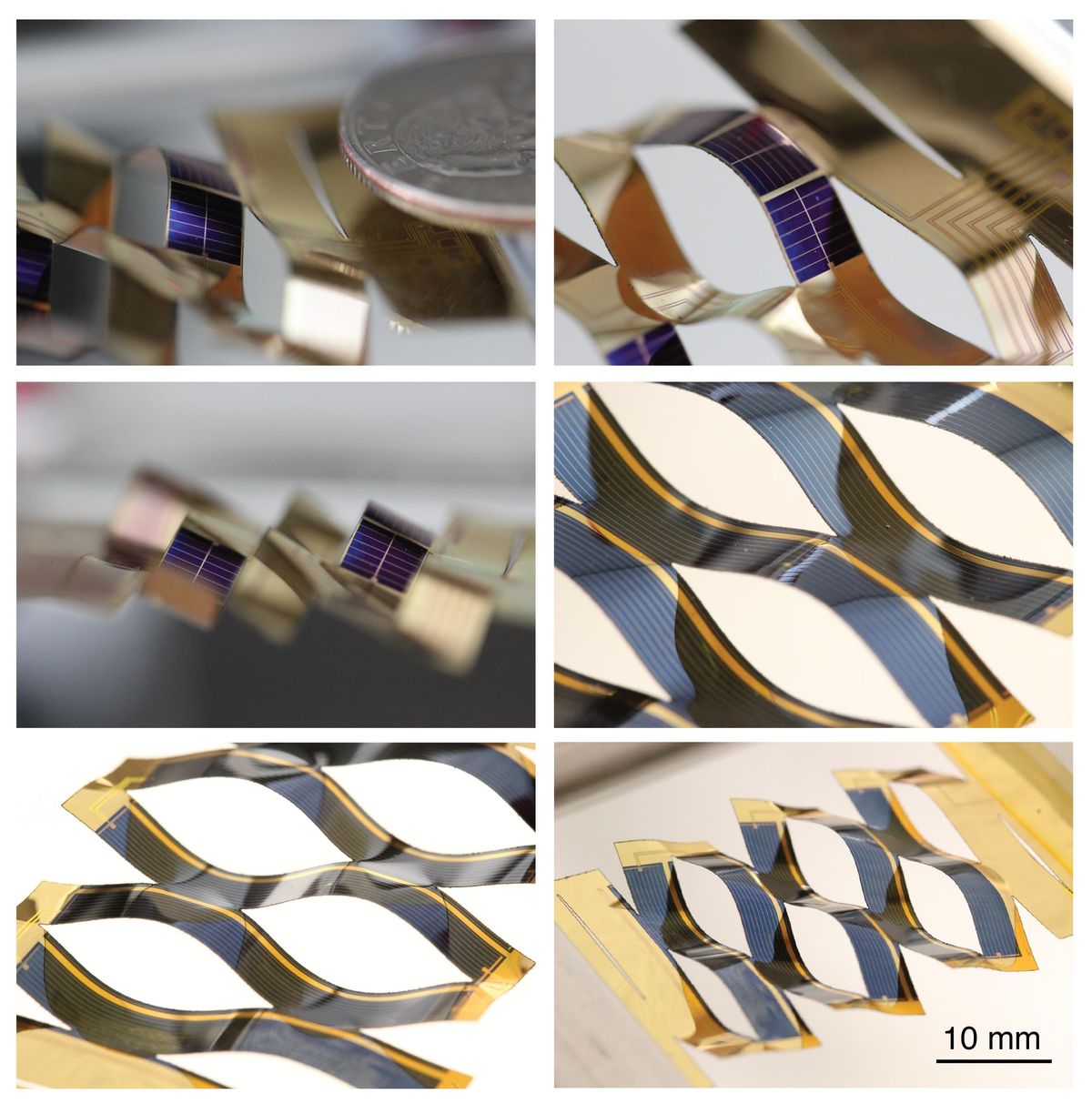To maximize the amount of electricity that solar cells generate, solar panels can be tilted to track the position of the sun over the course of a day. Conventional solar trackers can increase yearly energy generation by 20 to 40 percent, but they can be costly, heavy and bulky, limiting their widespread implementation.
Now materials scientist Max Shtein and his colleagues at the University of Michigan at Ann Arbor have developed novel solar cells that integrate tracking into their design. The design involves a variation of origami known as kirigami, which uses both folding and cutting to create unique structures. They detailed their findings in the 8 September online edition of the journal Nature Communications.
The scientists cut kirigami designs into a 3-micron-thick flexible crystalline gallium arsenide solar cells mounted on plastic sheets. A solar cell array of this type can tilt in three dimensions in a highly controllable manner when its edges are tugged. So a quick pull can make it flex so that it is at the best angle for catching rays.
The researchers found that their new devices could generate roughly as much power as solar cells mounted on conventional trackers. Moreover, the kirigami trackers proved to be electrically and mechanically robust, with no appreciable decrease in performance after more than 300 cycles of activity.
Shtein and his colleagues suggest that kirigami solar panels could be simple, inexpensive and lightweight, and have widespread rooftop, mobile, and spaceborne applications. They added that kirigami systems might also be useful for phased array radar and optical beam steering.
The scientists are now exploring whether mounting solar cells onto more durable materials such as spring steel could make kirigami systems even more robust.
Charles Q. Choi is a science reporter who contributes regularly to IEEE Spectrum. He has written for Scientific American, The New York Times, Wired, and Science, among others.



